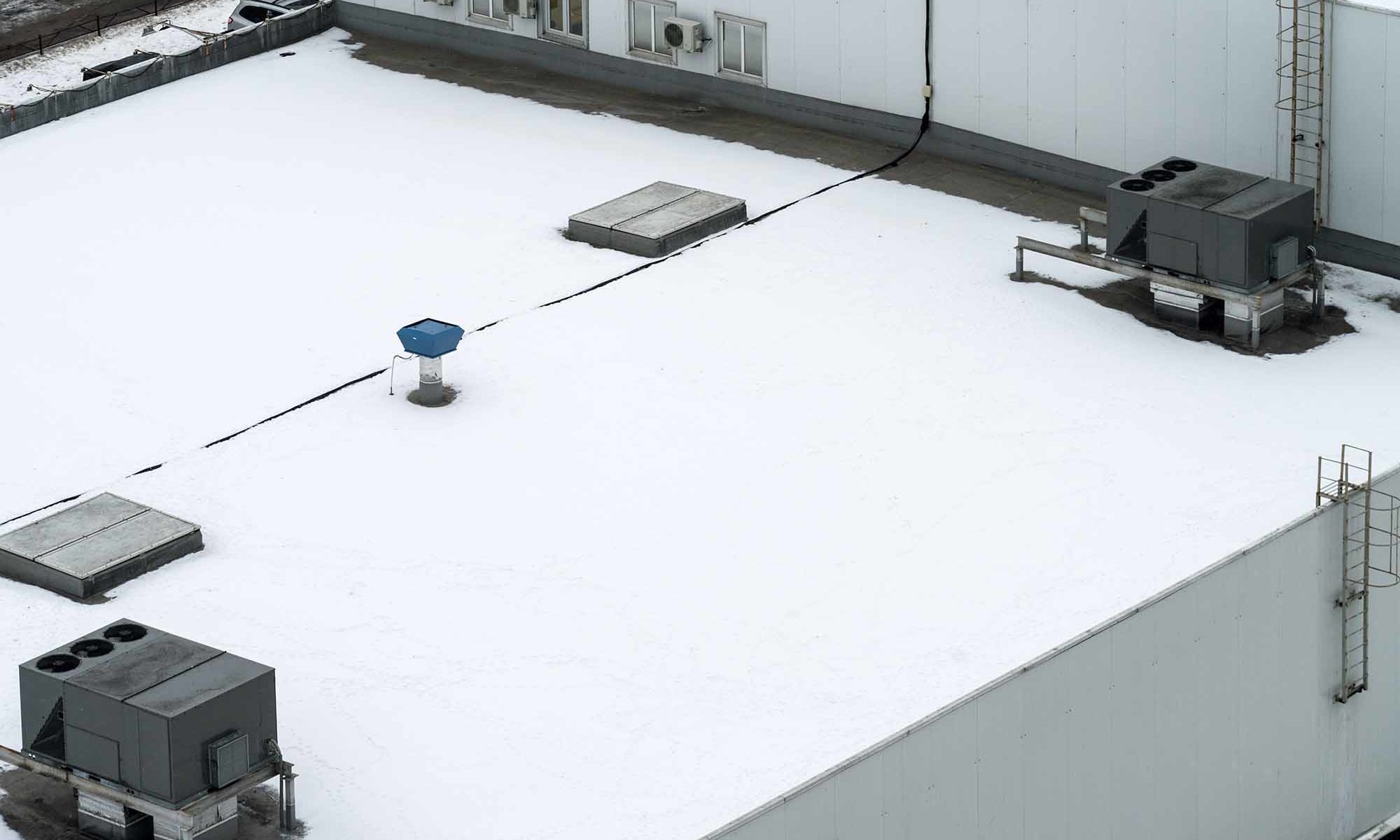Buildings and structures do their best to keep out the TWinter weather conditions are dangerous for your roof. Learn what you can do to keep your roof in good condition with our winter roofing tips.
Winter Is Coming
Winter can damage your roof in any number of ways, which is why we put together these winter roofing tips to prepare your structure for the frosty season.
Winter’s Impact on Roofs
Why is winter so dangerous for roofs? There are four key reasons:
Snow Damage
An ounce of snow leads to heavy problems for your roof. Snow accumulation is a massive weight on your roof. This weight can exceed your roof’s capacity and cause bowed ceilings, cracks above windows and doors, and even total roof collapse.
Snow melting slowly also leads to roof damage. Melted snow seeps into your roof when there’s too much to drain, which is a big source of leaking.
Some people spread calcium chloride or salt on their roof to melt snow—don’t do this. While this will melt the snow, it can seriously damage your roof and void your roofing material warranties.
Water and Ice Damage
Freezing rain is a serious threat to roofs and can develop into ice dams that block your gutters. If your gutters are impaired by ice dams, your roof won’t drain water properly. All of that water has to go somewhere, so it pools underneath your roof and creeps its way into your business.
While an inch or two of water may not seem serious, small leaks cause big problems. Water damage can:
- Fry electrical wiring
- Cause mold growth
- Compromise your building’s structural integrity
- Block vents
Freezing temperatures are hazardous for your roof, especially when paired with rain.
Wind Damage
Winter causes heavy winds that lash at your business’s roof. Winter winds are especially dangerous because they can be accompanied by hail or sleet. This leads to situations where the wind makes your roof vulnerable to hail or sleet, resulting in further damage.
Common Signs of Winter Roof Damage
How can you tell if your roof has been damaged? Common signs that point to roof damage include:
Leaks
Damaged roofs are the reason for most leaks. A random leak in the middle of your business probably indicates a roof failure somewhere. In contrast, a leak next to a window or wall may signal that the roof is not the culprit.
Creaky Noises
Creaky noises could indicate any number of issues with your facility. Pay attention to when the creaking occurs—is it after extreme weather conditions? If so, your roof could be structurally compromised and need a roof replacement.
Warped Ceilings
Have your ceilings drooped down at unusual angles? This might be a sign that the weight of the snow is too much for your roof to manage. Ceilings can also be affected when leaks have entered into your home.
Our Winter Roofing Tips
Follow these winter roofing tips to guarantee that your roof is prepared for the upcoming season. Thorough preparation makes its own luck—get your roof ready now to avoid stress later.
Inspect Your Roof
While a professional roof inspection is thorough, there are some easily identifiable issues that anyone can spot. Examine your roof for:
- Damage to roofing material
- Build up of leaves, branches, and other debris
- Irregularities like dark or wet spots
If you’re concerned about handling an inspection yourself, hire a professional roofing contractor. A professional can handle roof repair for winter and keep you prepared.
Clean Your Gutters
Prevent ice dams by cleaning out your gutters. Gutters stuffed with debris will freeze much faster than clean gutters. Blockage can lead to snow and ice seeping into your business and causing serious roof damage.
Clean gutters also prevent drafts and reduce winter heating costs. Gutter maintenance is a simple and effective winter roofing tip that mitigates winter roofing damage.
Check for Leaks
Inspect your business after extreme weather. Are there any leaks visible inside your building? Immediately call a local roofing contractor if you see any, because they escalate fast and cost big money.
Don’t climb onto your roof by yourself, especially during the winter. Roofing materials in winter can be slick and dangerous to navigate because of ice or sleet. The vast majority of roofing injuries happen when amateurs try to handle roof maintenance—leave it to the professionals.
Reseal Your Business
Look for areas in and around your business that need to be resealed. Resealing is a pretty simple process that weatherizes your home. Simple weatherizing only takes two tools: a caulk gun and sealant.
Replace loose or missing flashing as well. Flashing protects the structure of your business from water damage. Your entire facility can be compromised when flashing is not installed properly. While this is a more detailed winter roofing tip, it’s key to keeping your business secure.
Trim Trees
There are two key reasons you should trim tree branches:
- They accelerate debris accumulation.
- They could break off and crash into your business during storms.
We always recommend contacting professionals for tree branch removal—especially if it’s done during winter weather conditions.
Contact a Roofing Contractor for a Professional Roof Inspection
This winter roofing tip can’t be done by amateurs. A roof inspection carried out by experts will give you the peace of mind knowing your roof is ready for the winter. Protect your business by having your roof done right and trusting it to the professionals.
Simpson Unlimited has offered industry-leading commercial roofing services since 1993. We can handle any commercial roofing need, from free roof inspections to preventative maintenance that keeps your business prepared. We take pride in our work and have a proven track record of quality service. Contact us today to secure the future of your roof!
